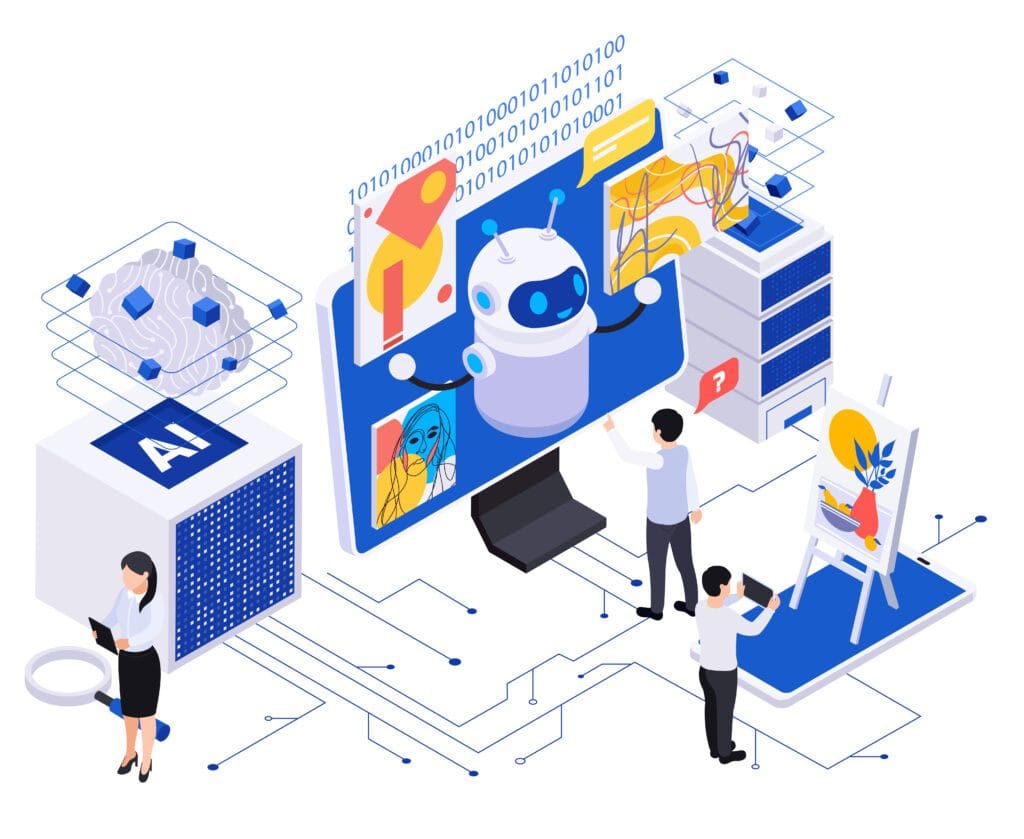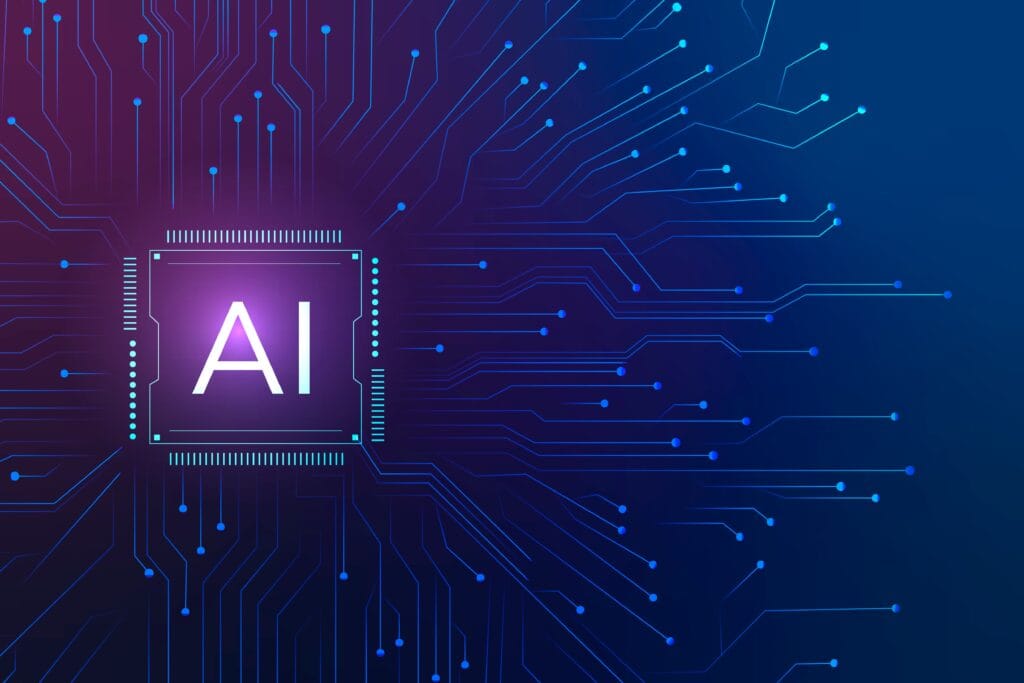Introduction to how AI in Web Development Helping Developers
In today’s digital age, Artificial Intelligence (AI) and Web Development are no longer separate worlds. Together, they are transforming how websites are built, how users interact with them, and how businesses deliver online experiences.
What was once a simple HTML and CSS-based web page has evolved into a smart, data-driven ecosystem powered by machine learning, natural language processing, and predictive analytics.
This blog explores how AI is shaping the future of the web, redefining the developer’s role, and opening up new possibilities for creating intelligent, adaptive, and human-centric websites.
- Introduction to how AI in Web Development Helping Developers
- 1. The Fusion of AI and Web Development
- 2. How AI Is Changing the Web Developer’s Role
- 3. AI in Frontend Development
- 4. AI in Backend Development
- 5. Top AI Tools Every Web Developer Should Know
- 6. Real-World Use Cases of AI-Powered Websites
- 7. How You Can Start Building an AI-Powered Web App
- 8. Future Trends — Web 4.0 and Intelligent Interfaces
- 9. Conclusion: The Smart Web Is Already Here

1. The Fusion of AI and Web Development
The modern web is rapidly moving from static to intelligent and self-learning platforms. With AI technologies like TensorFlow.js, OpenAI APIs, and Google Cloud Vision, developers can now integrate advanced features directly into websites — such as image recognition, chatbots, voice assistance, and content personalization.
AI is no longer a buzzword; it’s a developer’s superpower. Websites are now capable of understanding user behavior, predicting needs, and adapting content dynamically in real time.
For example, an e-commerce site can instantly recommend products based on past browsing patterns, or a learning portal can customize lessons based on the user’s progress.
In short: AI turns ordinary websites into smart digital experiences that grow and evolve with users.
2. How AI Is Changing the Web Developer’s Role
Traditional web development once focused mainly on front-end design and backend logic. Today, developers also need to think about data, machine learning models, and user intelligence.
With AI tools like GitHub Copilot, ChatGPT, and Codeium, coding has become faster, smarter, and more efficient.
Developers can now generate boilerplate code, debug scripts, and even get design recommendations in seconds. AI assists developers not by replacing them but by amplifying creativity and efficiency.
The modern web developer is not just a coder anymore — they’re becoming an AI-driven problem solver capable of building web systems that think, learn, and improve over time.
3. AI in Frontend Development
Frontend development has been revolutionized by AI in several key ways:
a. Smart UI/UX Design
AI tools like Uizard and Figma AI can generate complete layouts based on sketches or text prompts. This reduces development time and helps create interfaces that are data-driven and user-centric.
b. Predictive Interaction
Through machine learning, websites can predict how a user will interact — such as which button they might click next or where their attention will go. This enables personalized design experiences that improve engagement and retention.
c. Accessibility Enhancements
AI is also breaking barriers in accessibility. Tools using computer vision and voice-recognition APIs can help visually or hearing-impaired users navigate the web more easily.
In essence, AI empowers front-end developers to build interfaces that are not only visually appealing but also adaptive, inclusive, and responsive to human behavior.
4. AI in Backend Development
AI has quietly become the backbone of modern web servers and APIs.
Developers are now integrating AI models to make back-end processes smarter and more autonomous.
a. Intelligent Data Processing
Instead of relying on static databases, AI helps backend systems analyze user data and respond contextually — such as sending automated email suggestions or predicting inventory shortages in an online store.
b. Predictive APIs
AI-powered APIs allow web apps to forecast trends — from weather predictions to market analytics — in real time. These APIs make backend systems proactive instead of reactive.
c. Chatbots and Virtual Assistants
Frameworks like Rasa, Dialogflow, and LangChain have made it easy to integrate AI chatbots directly into websites. These bots can handle queries, provide product information, and learn continuously from conversations.
In short, AI turns your backend into a brain that continuously learns from every interaction and makes your web app smarter over time.
5. Top AI Tools Every Web Developer Should Know
To stay ahead in the AI-driven web world, developers should explore these top tools:
- TensorFlow.js: Run ML models directly in the browser or Node.js environment.
- OpenAI API (ChatGPT, DALL·E): Generate natural language and visual content.
- LangChain: Connect AI models with real-world data and knowledge bases.
- Hugging Face Transformers: Implement NLP, sentiment analysis, and text generation.
- Google Cloud Vision API: Integrate image recognition and object detection into your apps.
Each of these tools enables developers to integrate AI seamlessly into React, Node.js, or Next.js projects, bridging the gap between traditional coding and machine intelligence.
6. Real-World Use Cases of AI-Powered Websites
Let’s explore where AI is already redefining user experience:
- E-Commerce: Amazon and Shopify use AI to recommend products, detect fraud, and optimize inventory.
- Streaming Platforms: Netflix and Spotify rely on machine learning for personalized content suggestions.
- Education: Adaptive learning portals tailor content based on student performance using AI analytics.
- Healthcare: AI-driven web apps assist doctors with image analysis and medical record automation.
- Customer Support: Many websites now feature AI chatbots that resolve 80% of customer queries instantly.
These examples show how AI is creating a hyper-personalized, efficient, and intelligent web ecosystem that benefits both users and businesses.
7. How You Can Start Building an AI-Powered Web App
Creating an AI-powered website is easier than it sounds. Here’s a mini-guide to get started:
- Choose Your Tech Stack – Start with React (frontend) and Node.js (backend).
- Integrate AI Models – Use TensorFlow.js for browser-based ML or connect APIs like OpenAI for NLP.
- Create a Data Flow – Collect and preprocess data responsibly using proper privacy protocols.
- Add Intelligence Features – Include chatbots, recommendation engines, or image classifiers.
- Test and Optimize – Continuously retrain your model with fresh user interactions.
💡 Pro Tip: For a hands-on example, check out our next blog — “Build an AI Image Recognition Web App using React and TensorFlow.js.”
This project will guide you through practical implementation using free and open-source tools.
8. Future Trends — Web 4.0 and Intelligent Interfaces
The upcoming Web 4.0 era will blur the boundaries between digital and physical worlds.
AI will play a central role in creating emotion-aware, context-sensitive, and self-evolving websites.
Future web experiences will include:
- Voice-based interactions using NLP and speech synthesis
- Emotion detection through webcam and computer vision
- Autonomous web systems that learn and self-optimize over time
As AI models become more efficient, developers will be able to embed intelligence directly into browsers — making the entire web a living, thinking network.
9. Conclusion: The Smart Web Is Already Here
AI in web development is not a futuristic dream — it’s today’s reality.
From machine learning-driven analytics to AI-powered interfaces, developers are now building websites that understand, adapt, and grow with their users.
For web developers, learning AI is no longer optional — it’s the next natural step in evolution.
By combining your coding skills with the power of AI, you can create smarter web experiences that lead the way into the next generation of the internet.


